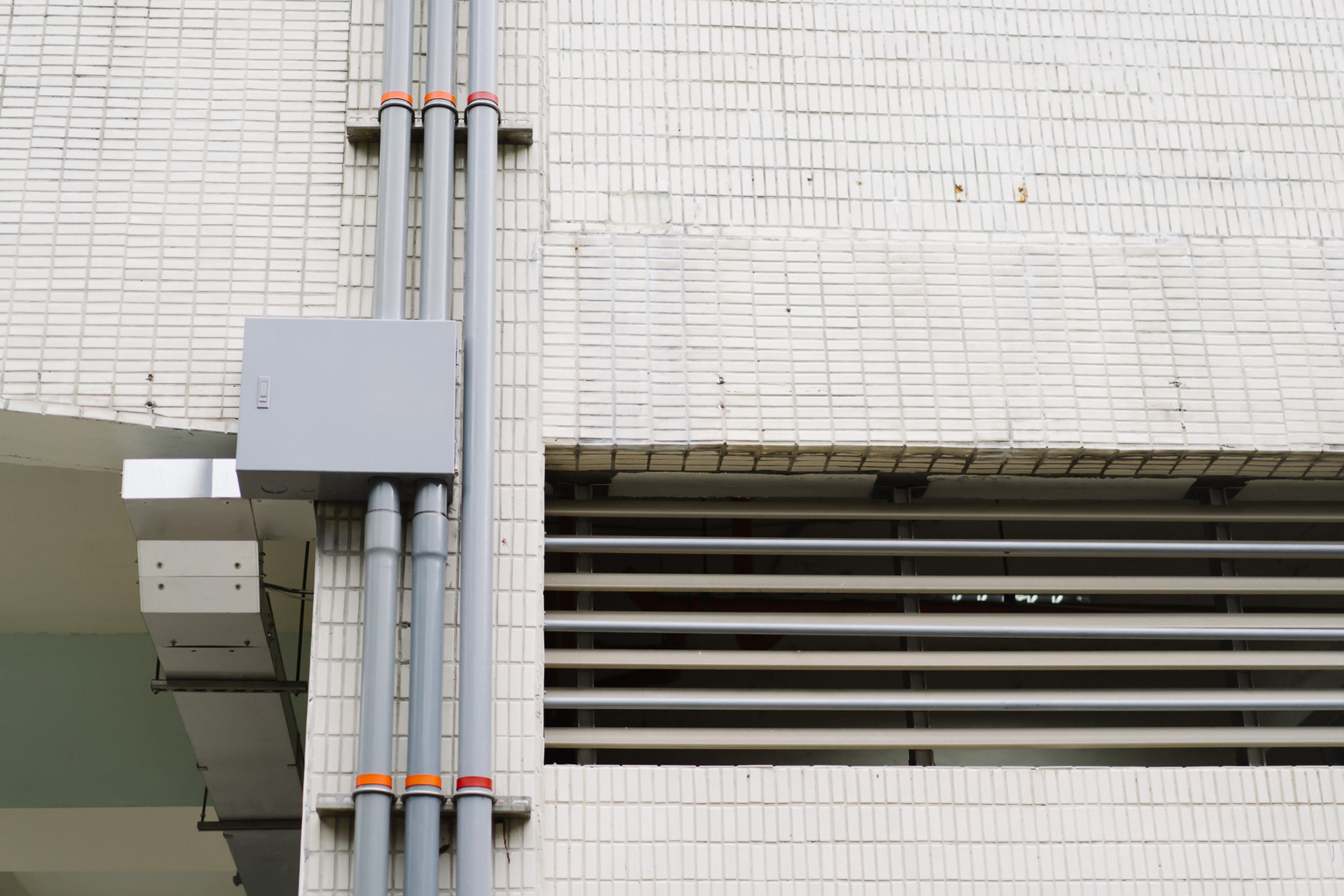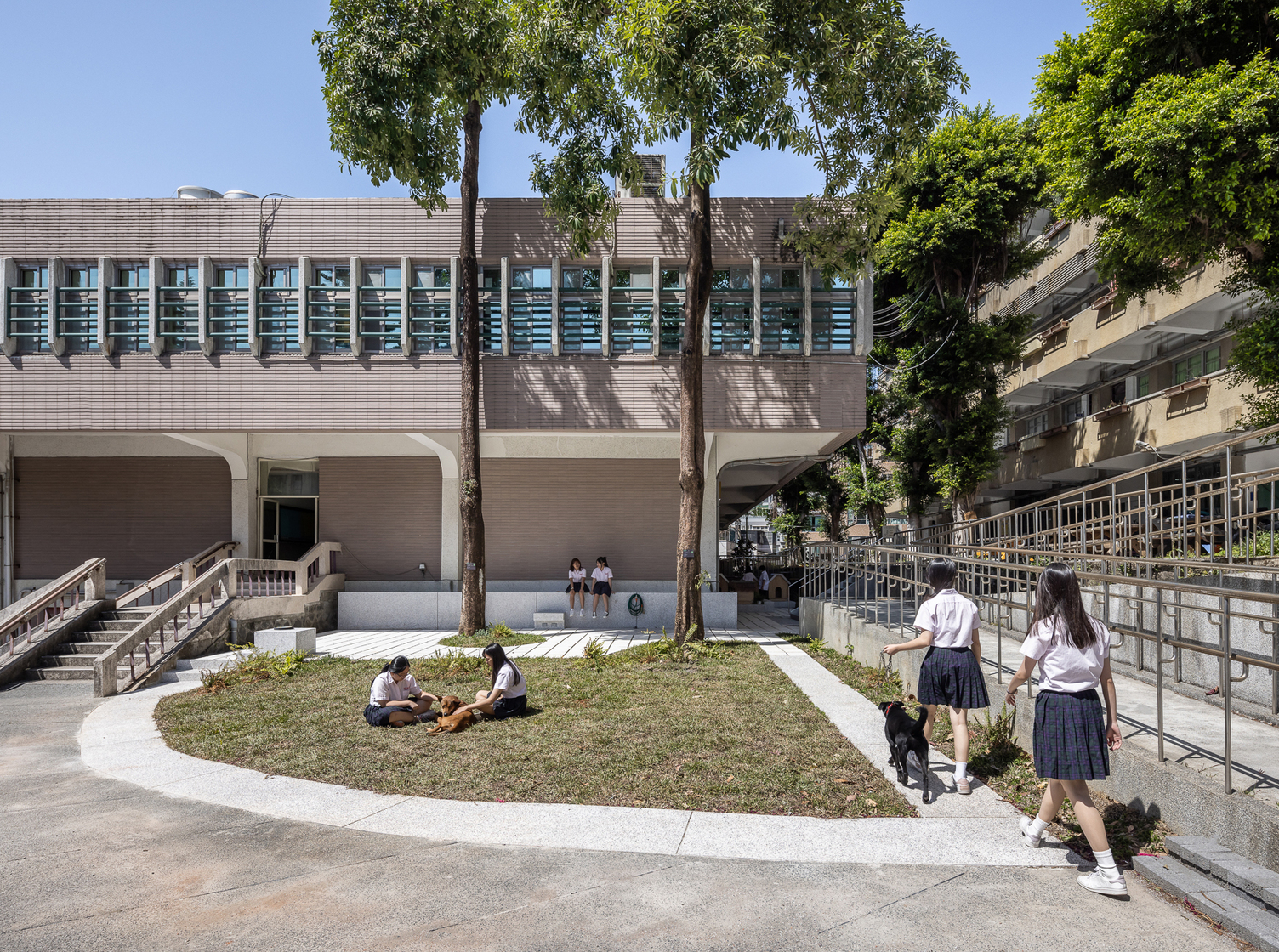Reorganize Messy Powerlines to Return Blue Sky and White Cloud to Kids
- Exclusive Interview with former Principal Kao Chiung-Chi of Shalun Elementary School
Sculptor Auguste Rodin once said: “The life is not a lack of beauty, but the lack of discovery.” When we look at this old quote from a new perspective, we will find that there are actually many “ugly” corners hidden in life, and the lack of discovery is the result of people getting used to them.

Organize Messy Powerlines to reveal the Vast Blue Sky
However, “getting used to something” is not necessary a good thing. To Kao Chiung-chi, former principal of Shalun elementary School, the messy pipelines and powerlines in this century-old school accumulated over history were the “ugly corners” students and teachers had grown used to, but constantly concerned him.
“I was especially intrigued by the sky since an early age, and I love looking at the vast blue sky. Therefore, I hoped to organize the powerlines across the horizon and the wires covering the walls in this school, giving the blue sky and white cloud back to our kids, while also making the campus neater and cleaner,” said Kao. However, for years, Kao did not reveal this secret desire, for the government’s budget focused mainly on construction, and there would not be additional funds allocated for “organization.” He had never been able to fulfill his dream. It was not until he came across “Design Movement on Campus” executed by TDRI under the commission of Ministry of Education right before the deadline that he finally saw a possibility to fulfill his dream.
Nonetheless, challenges only began after the school successfully applied for the project. The cables and wires at the century-old school were interwoven and intertwined like roots of ancient trees, and it would be mission impossible to fix all the problems on the budget of “Design Movement on Campus.” Thus, after the school discussed with TDRI, they decided to narrow down the scope of the renovation to the wall near the main gate and the powerlines hanging over the horizon. After the scope of renovation was set, the second challenge was to find a design team. “Perhaps organization of cables and powerlines was not generally considered a part of “design,” so when we determined the targets of our renovation, not a lot of teams were will to participate in the project at first. Fortunately, with the help of TDRI, we were able to find ‘Oriental Sun Limited,’” recalled Kao.

“Neat and Clean” are the most crucial Prerequisites before Spatial Beautification
After “Oriental Sun” moved in, the team first inventoried the various cables and powerlines on the campus, identifying the ones that were still being used and the ones that had long been abandoned; then, they combined powerlines with similar functions, and labeled the different purposes using different colors, developing a systematic logics for the organization of various pipelines and circuits, including sewage system, fire hydrants, water supply, phone lines, internet cable, and CCTV system. Moreover, “Oriental Sun” used the same material for all pipelines and arranged the pipelines and powerlines in a neat and organized fashion, creating a slick and clean look.
After the organization, the originally messy powerlines now has a system to follow; the sky is no longer cut through by hanging powerlines, and students can enjoy a vast and bright blue sky. “What impressed me was that a teacher told me after the construction: ‘I feel that buildings can talk, and seeing shadows of trees projected onto the neat and clean walls, it feels like all our hard work has come into fruition,’” said Kao.
Although organization of cables and powerlines is not some glamorous design, it can substantially enhance the quality of the environment. This journey from “discovering problems” to “realizing changes” also allowed the students and teachers who were part of this transformation to truly understand the importance of environmental aesthetics. “To me, neat and clean are the most crucial prerequisites before ‘beautification,’” said Kao. “In Taiwan, messy powerlines are a common scene in cities. But being used to it in the past does not mean it should be the case in the future. As the society continues to advance, aesthetics should also become a habit in life.”
Just as Kao Chiung-chi said, aesthetics should become a habit in life, and all habits are formed through learning. Perhaps if you ask Shalun Elementary School’s teachers and students in the future, places for aesthetics learning will not be limited to art museums or classes, and to them, the neat and organized cables and powerlines on the walls and in the sky are their seemingly ordinary but profound daily enlightenment of aesthetics.




